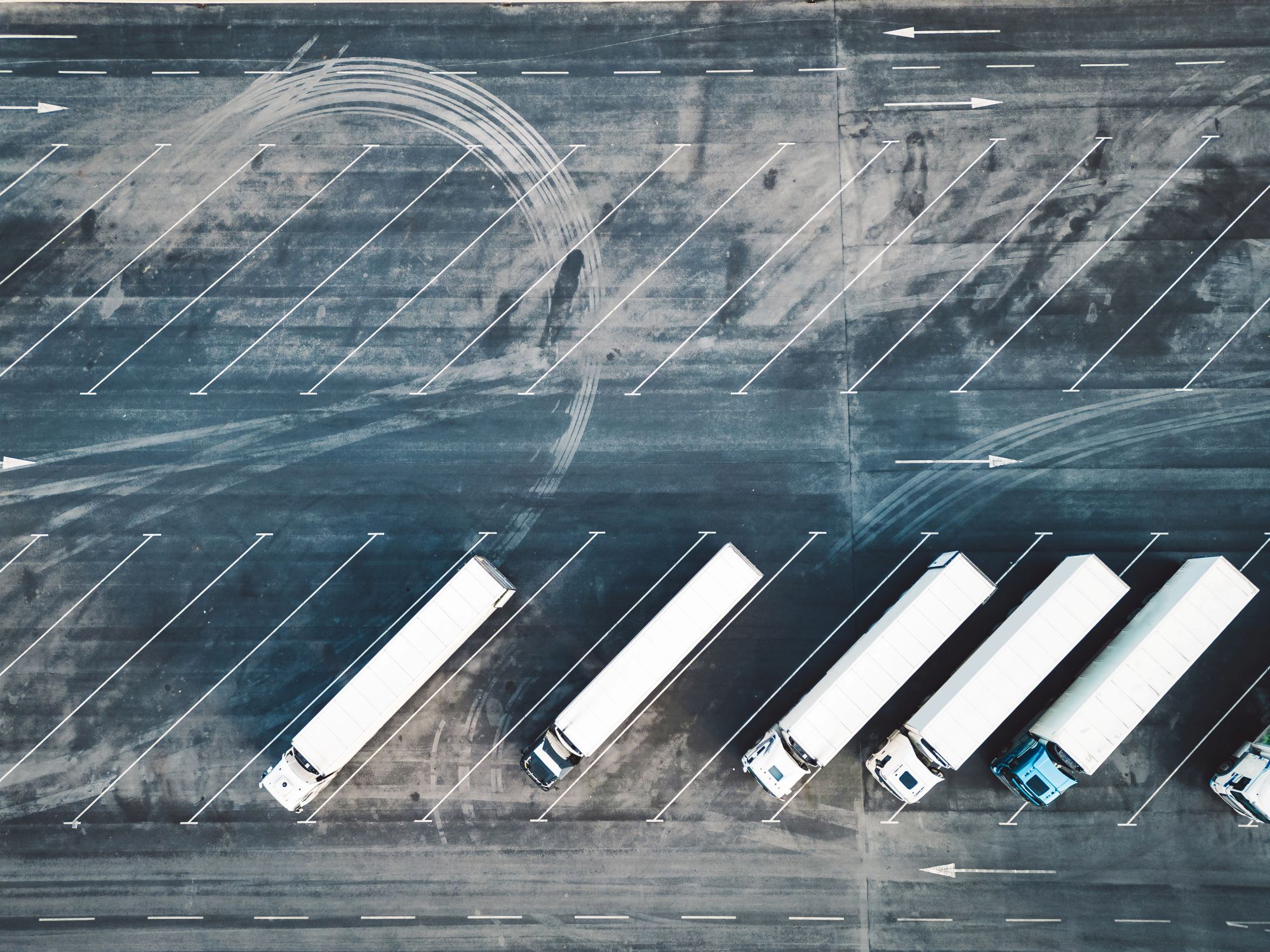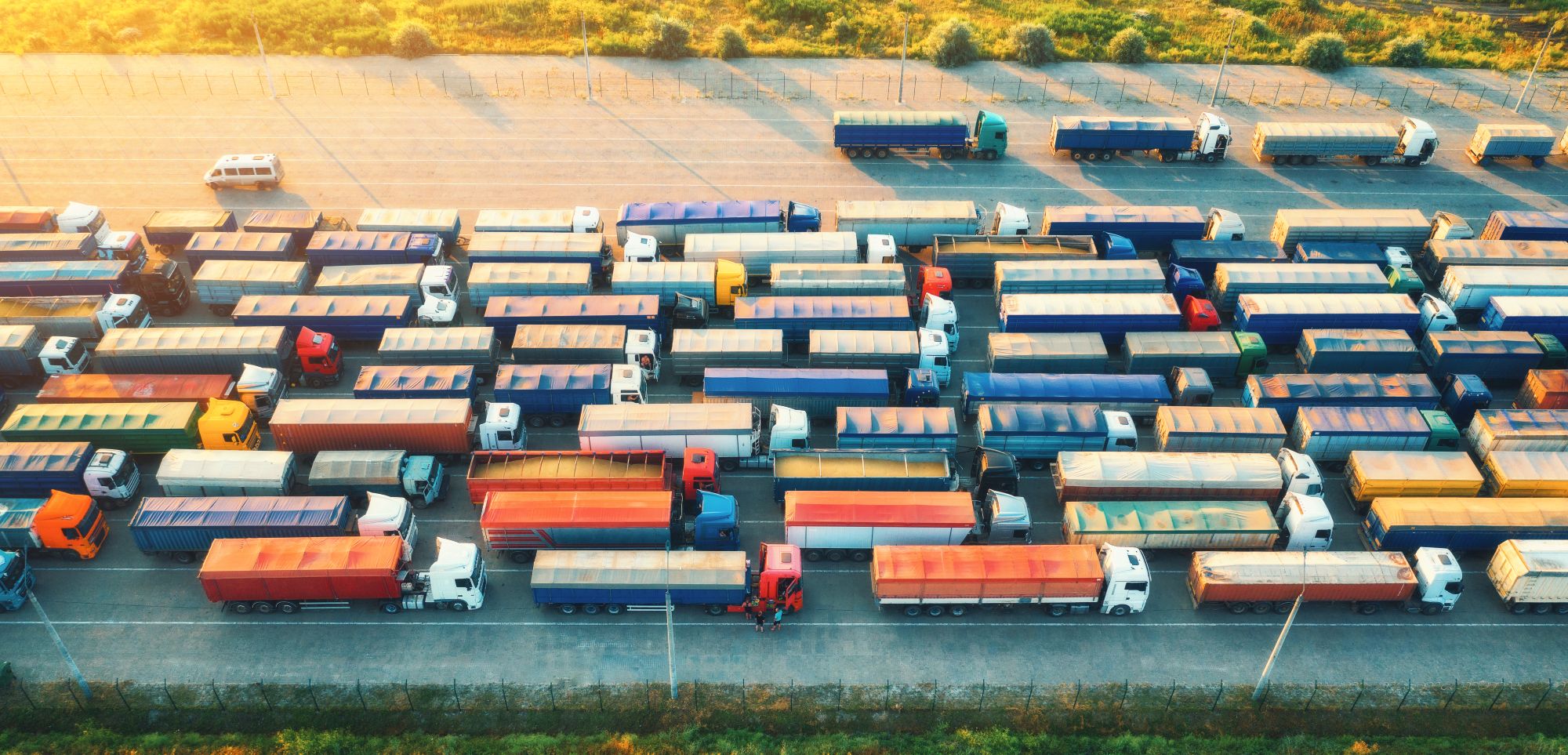
Guest
Schadstoffarme Zonen in Spanien: Was Flottenbetreiber wissen müssen
Erstellt: 03.10.2025
•
Aktualisiert: 08.10.2025
Bis Ende 2025 werden 149 spanische Städte - von Madrid und Barcelona bis hin zu touristischen Zentren wie Valencia, Alicante und Benidorm - den Zugang für Fahrzeuge mit hohem Schadstoffausstoß beschränken. Für Flottenbetreiber bedeutet das neue Risiken bei der Einhaltung von Vorschriften, kostspielige Nachrüstungen und engere Lieferfristen.
Die spanischen Umweltzonen (Zonas de Bajas Emisiones oder ZBEs) sind Teil eines umfassenderen europäischen Vorstoßes zur Verbesserung der Luftqualität und zur Verringerung der Verkehrsemissionen. Sie sind bereits in größeren Städten im ganzen Land in Kraft und werden mit Bußgeldern von bis zu 200 € belegt, wobei die Regeln von Stadt zu Stadt unterschiedlich sind.
In diesem Leitfaden erklären wir, wie ZBEs funktionieren, welche Fahrzeugkategorien betroffen sind und was die Betreiber tun müssen, um ihre Flotten auf der Straße zu halten.
ZBE-Regeln und Fahrzeugklassen
ZBEs werden nach spanischem Recht in Städten mit mehr als 50.000 Einwohnern (und in Städten mit mehr als 20.000 Einwohnern und besonders schlechter Luftqualität) eingeführt, um die Luftqualität in den Städten zu verbessern und die EU-Klimaziele zu unterstützen.
Der Zugang zu einer ZBE wird durch die Umweltplakette (distintivo ambiental) eines Fahrzeugs bestimmt, die von der spanischen Generaldirektion für Verkehr (DGT) ausgestellt wird.
Die Kategorien sind:
Zero (Blaue Plakette):
Voller Zugang
● 100% elektrische Fahrzeuge (BEV)
● Wasserstoff-Brennstoffzellenfahrzeuge (FCEV)
● Plug-in-Hybride mit mindestens 40 km elektrischer Reichweite
Eco (Grüne/Blaue Plakette):
Generell uneingeschränkter Zugang
● Standard-Hybridfahrzeuge (HEV)
● Plug-in-Hybride mit weniger als 40 km elektrischer Reichweite
● Mit Gas betriebene Fahrzeuge (CNG/LNG/LPG)
C (Grüne Plakette):
Zugang mit einigen zeitlichen/räumlichen Einschränkungen
● Fahrzeuge mit Benzinmotor: Euro 4/5/6 (in der Regel ab 2006)
● Dieselfahrzeuge: Euro 6 (in der Regel ab 2014)
B (Gelbe Plakette):
Zunehmend eingeschränkt, oft während der Hauptverkehrszeiten gesperrt
● Fahrzeuge mit Benzinmotor: Euro 3 (typischerweise 2000-2005)
● Dieselfahrzeuge: Euro 4-5 (in der Regel 2006-2013)
Kein Abzeichen:
Generell aus allen ZBEs verbannt
● Benzinfahrzeuge unter der Euro-3-Norm
● Dieselfahrzeuge unterhalb der Euro-4-Norm
Benzinfahrzeuge unter Euro 3 und Dieselfahrzeuge unter Euro 4 sind in der Regel von ZBEs ausgeschlossen, wobei die Einschränkungen je nach Stadt variieren.
Es ist wichtig zu wissen, dass ausländische Fahrzeuge vor der Einfahrt in eine ZBE bei den örtlichen Stadtverwaltungen angemeldet werden müssen, auch wenn sie gleichwertige Euro-Normen erfüllen. Ohne Registrierung können konforme Fahrzeuge automatisch mit Bußgeldern belegt werden, was für internationale Spediteure, die in Spanien tätig sind, zu einem häufigen Problem geworden ist.

Von ZBEs betroffene Gebiete
In Madrid und Barcelona gibt es bereits seit einigen Jahren ZBEs mit sehr spezifischen Regeln und großen Erfassungsbereichen. Bis Ende 2025 soll das System auf 149 Städte ausgeweitet werden, darunter auch kleinere Städte und Touristenorte wie Benidorm, Valencia, Sevilla und Alicante.
Einige Städte sind noch dabei, ihre Zonen einzuführen oder schrittweise durchzusetzen, wobei es Übergangsfristen gibt (z. B. Warnungen bis Ende 2025 in Valencia und Benidorm). Andere, wie [Málaga] (https://cadenaser.com/andalucia/2025/09/18/malaga-sancionara-en-la-zona-de-bajas-emisiones-a-partir-del-uno-de-diciembre-ser-malaga/), werden ab Dezember 2025 mit der Verhängung von Bußgeldern für nicht konforme Fahrzeuge beginnen.
Es sollte beachtet werden, dass Städte unterschiedliche Regeln haben können, wobei einige nicht-konforme Fahrzeuge für wesentliche Dienste zulassen, so dass es wichtig ist, sich über die Regeln einer bestimmten Stadt zu informieren, bevor man ein Fahrzeug entsendet.
Spanien ist nicht allein: Mehr als 320 Städte in ganz Europa verfügen inzwischen über Umweltzonen, wobei das französische Crit'Air-System, die deutschen Umweltzonen und die ULEZ im Vereinigten Königreich zu den etabliertesten gehören. Für grenzüberschreitende Spediteure entsteht dadurch ein Flickenteppich aus Vorschriften, Plaketten und Strafen, der die Risiken und Kosten der Einhaltung erhöht.
Was Flottenbetreiber tun müssen
Sie müssen sicherstellen, dass Ihre Fahrzeuge mit der entsprechenden DGT-Plakette oder - bei ausländischen Fahrzeugen - mit dem entsprechenden Kennzeichen versehen sind.
Die Bußgelder für Verstöße liegen in der Regel bei [200 € pro Verstoß] (https://www.sertrans.es/zonas-de-bajas-emisiones/), können aber je nach Gemeinde variieren. Städte wie Madrid und Barcelona haben bereits damit begonnen, diese Strafen über automatische Kennzeichenerfassungssysteme (ANPR) zu verhängen.
Themen für Flottenmanager
Flottenerneuerung und Kosten
Viele Logistikunternehmen sehen sich mit Hürden konfrontiert, weil ältere Diesel-Lkw inzwischen in den Städten verboten oder eingeschränkt sind. Das Durchschnittsalter der spanischen Frachtflotte beträgt 14 Jahre (https://www.acea.auto/figure/average-age-of-eu-vehicle-fleet-by-country/). Das bedeutet, dass eine beträchtliche Anzahl von Fahrzeugen nicht den Vorschriften entspricht und ersetzt werden muss, wenn die Spediteure in die ZBE eintreten wollen.
Die Fahrzeugpreise verstärken den Druck: Ein [Elektro-Lkw kann dreimal so viel kosten wie ein Dieselfahrzeug] (https://ekoenergetyka.com/blog/electric-vs-traditional-trucks-a-cost-of-ownership-comparison/#:~:text=Economic%20Competitiveness%20of%20Electric%20Trucks,cheaper%20in%20the%20long%20run:), während [Wasserstoff-Lkw] (https://thundersaidenergy.com/downloads/is-natural-gas-a-competitive-truck-fuel/#:~:text=Hydrogen%20trucks%20have%20been%20proposed,and%20Hydrogen%20%E2%80%94%20across%2035%20variables.) noch teurer sind.
CETM-Madrid, der spanische Verband für Güterverkehr, schätzt die kumulierten Kosten für die Madrider Güterkraftverkehrsunternehmen auf rund 1,3 Mrd. Euro (https://transporteprofesional.es/ultimas-noticias/cetm-madrid-reclama-modificar-el-calendario-de-acceso-a-las-zonas-de-bajas-emisiones-a-los-camiones) und fordert eine Anpassung der Fristen und mehr Unterstützung.
Zeitverdichtung
Die Daten zeigen, dass sich die Änderungen auf die Lieferfristen auswirken. Eine kürzlich durchgeführte Umfrage unter Unternehmen in Pilotzonen ergab, dass [36,7 % über längere Lieferzeiten und höhere Versandkosten berichteten] (https://www.jiem.org/index.php/jiem/article/download/6902/1089)
Staus sind auch während der eingeschränkten Lieferzeiten (8-10 Uhr) üblich, wenn viele Unternehmen um den Zugang konkurrieren. Rund [83 % der befragten Unternehmen] (https://www.jiem.org/index.php/jiem/article/download/6902/1089) gaben auch an, dass das Fehlen geeigneter Be- und Entladebereiche ein Hauptgrund für Verzögerungen ist.
Dieser "Zeitkomprimierungseffekt" - bei dem Lieferungen in weniger Stunden erfolgen müssen - führt zu Engpässen an den Zonengrenzen, was die Wahrscheinlichkeit von Verspätungen und unterbrochenen Lieferketten erhöht.
Druck auf das Personal
Die Störung des Fahrplans erstreckt sich nicht nur auf die Routenplanung der Fahrzeuge, sondern auch auf die Verwaltung des Personals. Barcelonas Ansatz für ZBEs veranschaulicht die Herausforderung: Die Stadt bietet zweistündige Nachtzustellungen (21:00-07:00) an, um die Überlastung am Tag zu verringern, aber die spanischen Tarifverträge sehen vor, dass Nachtarbeit mit einem Aufschlag von etwa 25 % bezahlt wird.
Dies stellt die Flottenbetreiber vor die schwierige Wahl, entweder tagsüber Staus und Verspätungen in Kauf zu nehmen oder aber die höheren Arbeitskosten für den Nachtbetrieb zu akzeptieren.
Die Umweltvorteile der Einführung von ZBEs
Trotz der Herausforderungen bieten ZBEs klare Vorteile für die öffentliche Gesundheit. Studien der Madrid Central LEZ aufgezeichnet signifikante Reduktionen in Stickstoffdioxid (NO₂) innerhalb der Zone. Breitere europäische Untersuchungen zeigen, dass Rußemissionen um bis zu 47 % und ultrafeine Partikel um 56 % nach der Einführung von Umweltzonen zurückgehen.
Diese Verringerung führt unmittelbar zu einer besseren Luftqualität, weniger Atemwegserkrankungen und weniger Krankenhauseinweisungen. Für Stadtbewohner - und Autofahrer, die stundenlang im Stau stehen - sind die gesundheitlichen Vorteile greifbar, auch wenn sie unbequem sind.
Unterstützung für Fahrer und Betreiber in ganz Europa
"Umweltzonen werden sich durchsetzen", sagt Raqual Martinez, European Sales Manager bei SNAP. "Die Herausforderung für unsere Gemeinschaft besteht darin, sich anzupassen, ohne die Effizienz oder das Wohlbefinden der Fahrer zu beeinträchtigen. Wir bei SNAP haben uns verpflichtet, Flotten in Spanien und ganz Europa zu unterstützen und ihnen dabei zu helfen, regulatorische Änderungen in betriebliche Vorteile umzuwandeln."
Wir können die LEZ-Vorschriften zwar nicht ändern, aber unsere intruck-App macht das Leben auf der Straße einfacher. Fahrer können damit sichere Lkw-Parkplätze und Waschanlagen finden und buchen, sehen, welche Einrichtungen an den einzelnen Haltestellen zur Verfügung stehen, und Ruhepausen planen, die in engere Zeitfenster für die Lieferung passen - egal, ob sie nach Madrid fahren, Barcelona umfahren oder auf längeren Strecken die Grenzen überqueren.
Laden Sie noch heute die intruck app herunter und sorgen Sie für reibungslosere Abläufe in der sich wandelnden spanischen Transportlandschaft.



